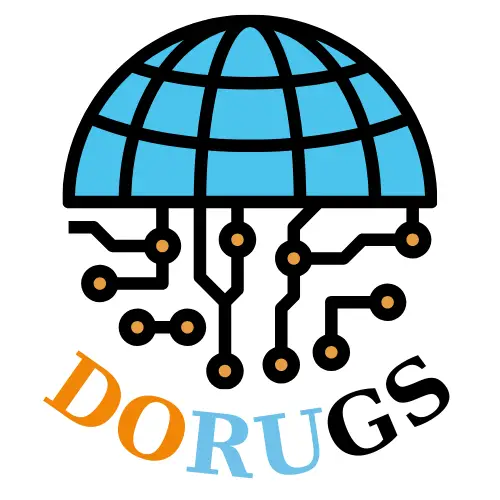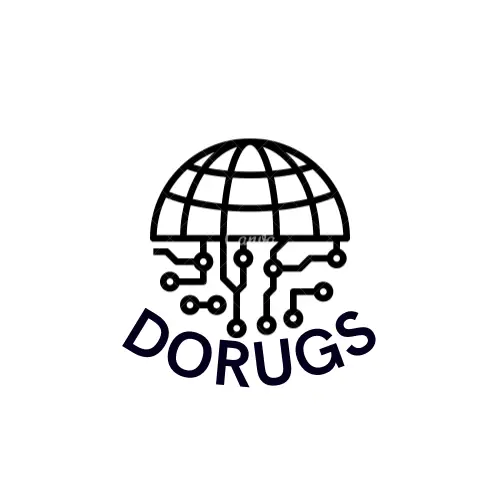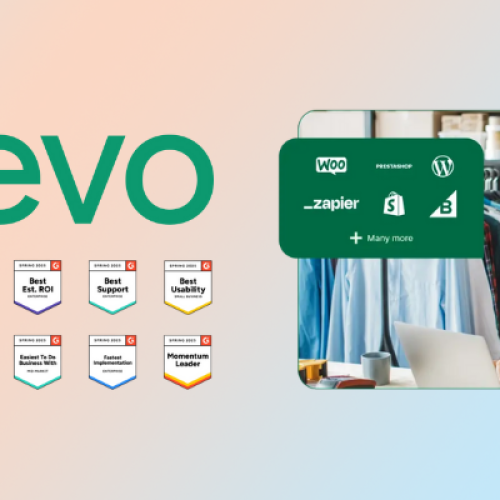The email marketing landscape is evolving faster than ever, and the platforms that anticipate these changes—rather than react to them—will dominate the next decade. After analyzing industry data, speaking with marketing leaders, and examining platform development roadmaps, I’ve identified the key trends that will define email marketing’s future.
More importantly, I’ll show you which platforms are already building the infrastructure needed to capitalize on these email marketing predictions 2025 and beyond. The choices you make today will determine whether you’re leading these trends or scrambling to catch up.

Table of Contents
ToggleThe Prediction Framework: How We See the Future
Making accurate email marketing predictions 2025 requires analyzing multiple data sources and industry indicators:
Data Sources for Future Analysis:
- Platform development roadmaps and feature releases
- Regulatory trend analysis across major markets
- Consumer behavior research and generational shifts
- Technology adoption patterns in marketing departments
- Investment flows in marketing technology sectors
Prediction Confidence Levels:
- High Confidence (90%+): Trends already in motion with clear indicators
- Medium Confidence (70-90%): Strong signals with some variables
- Emerging Trends (50-70%): Early indicators requiring monitoring
High-Confidence Email Marketing Predictions 2025
1. AI-Powered Email Creation Becomes Standard
Current State: Basic AI tools for subject lines and simple personalization 2025 Prediction: Complete AI-generated email campaigns with minimal human input
Why This Will Happen:
- AI content quality has reached human-level performance for marketing copy
- Small businesses need affordable access to professional-quality email creation
- Personalization at scale requires automated content generation
- Time-to-market pressures demand faster campaign creation
Platform Readiness Assessment: Advanced AI integration requires significant infrastructure investment. Platforms that began AI development early will have substantial advantages over those starting now.
Brevo’s AI Positioning: Brevo’s Aura AI already demonstrates sophisticated email content generation, optimization, and personalization. Their European AI development approach focuses on practical business applications rather than experimental features.
2. Multi-Channel Marketing Integration Reaches Maturity
Current State: Basic email + SMS integration on some platforms 2025 Prediction: Seamless orchestration across email, SMS, WhatsApp, social media, and emerging channels
Market Drivers:
- Consumer expectations for consistent cross-channel experiences
- Rising costs of single-channel customer acquisition
- Improved attribution modeling across channels
- Platform consolidation reducing tool stack complexity
Implementation Challenges: Most platforms struggle with native multi-channel integration, relying instead on complex third-party connections that create data silos and increase costs.
Brevo’s Multi-Channel Advantage: Unlike competitors who bolt on additional channels, Brevo built multi-channel capability into their core architecture. Email, SMS, WhatsApp, and live chat share unified customer profiles and automation workflows.
3. Privacy-First Marketing Becomes Regulatory Requirement
Current State: GDPR in Europe, voluntary adoption elsewhere 2025 Prediction: Global privacy regulations require privacy-by-design marketing platforms
Regulatory Timeline:
- US Federal Privacy Law: Expected passage by late 2025
- Enhanced GDPR Enforcement: Significant penalty increases
- Asian Market Regulations: Japan, Singapore, South Korea strengthening requirements
- Browser-Level Protection: Safari, Chrome, Firefox expanding tracking limitations
Platform Impact: Email platforms without native privacy infrastructure will face expensive retrofitting or regulatory compliance issues.
Brevo’s Privacy Foundation: Built on European privacy standards from inception, Brevo’s architecture naturally complies with emerging global regulations without requiring platformoverhauls.

Medium-Confidence Email Marketing Predictions 2025
4. Voice-Email Integration Emerges
Prediction: Voice assistants will read, respond to, and help create email content Confidence Level: 75%
Technology Requirements:
- Advanced natural language processing for email content
- Voice authentication for email security
- Integration with major voice assistant platforms
- Accessibility compliance for voice interactions
Early Indicators: Smart speaker adoption continues growing, and voice-first interfaces are becoming standard in business applications.
Platform Preparedness: Most email platforms haven’t begun voice integration development, creating opportunities for early movers.
5. Blockchain-Based Email Authentication
Prediction: Blockchain technology will verify email sender authenticity and prevent spoofing Confidence Level: 70%
Market Drivers:
- Increasing email fraud and phishing attempts
- Need for verifiable sender reputation
- Demand for transparent email delivery verification
- Growing enterprise blockchain adoption
Technical Challenges: Blockchain email authentication requires significant infrastructure changes and industry-wide adoption standards.
6. Predictive Email Timing Reaches Individual-Level Precision
Current State: Basic send time optimization based on historical data Prediction: AI will predict optimal send times for each subscriber with high accuracy
Required Developments:
- Advanced machine learning models analyzing individual behavior patterns
- Real-time data processing for dynamic timing adjustments
- Integration with external data sources (weather, events, news cycles)
- Cross-device behavior tracking and analysis
Brevo’s Predictive Capabilities: Brevo’s AI infrastructure provides the foundation for advanced predictive timing, with early implementations already showing promising results.
Emerging Email Marketing Predictions 2025
7. Interactive Email Evolution Beyond AMP
Prediction: Email will support app-like functionality rivaling dedicated mobile applications Confidence Level: 60%
Technology Developments:
- Enhanced AMP capabilities with broader client support
- WebAssembly integration for complex email applications
- Real-time collaboration features within emails
- Advanced form processing and data collection
Market Readiness: Consumer acceptance of interactive emails is growing, but email client limitations still restrict advanced functionality.
8. AI-Powered Customer Journey Orchestration
Prediction: AI will automatically design and optimize complete customer journeys across all touchpoints Confidence Level: 65%
Capability Requirements:
- Advanced customer behavior prediction
- Real-time journey optimization
- Cross-channel attribution modeling
- Automated content creation and testing
Current Limitations: Most platforms lack the data integration and processing power needed for comprehensive journey orchestration.
9. Sustainability Metrics in Email Marketing
Prediction: Environmental impact will become a standard email marketing metric Confidence Level: 55%
Driving Forces:
- Corporate sustainability reporting requirements
- Consumer preference for environmentally responsible brands
- Regulatory pressure on digital carbon footprints
- ESG investment criteria affecting marketing technology choices
Implementation Challenges: Measuring email environmental impact requires sophisticated tracking and industry-standard methodologies.

Platform Evolution Analysis: Who’s Building the Future?
Different email platforms are investing in different aspects of these predicted trends:
Innovation Investment Patterns
| Platform | AI Development | Multi-Channel | Privacy Infrastructure | Future Features |
|---|---|---|---|---|
| Brevo | Heavy investment | Native integration | Built-in foundation | Balanced approach |
| Mailchimp | Moderate | Acquisition-based | Retrofitted | Consumer-focused |
| HubSpot | Heavy investment | Strong | Good | Enterprise-focused |
| Constant Contact | Light | Limited | Basic | Stability-focused |
Development Philosophy Differences
Brevo’s Approach:
- European Innovation Model: Practical AI applications with strong privacy protections
- Integrated Architecture: Building features into core platform rather than adding layers
- SMB Focus: Ensuring advanced capabilities remain accessible to smaller businesses
- Regulatory Proactivity: Anticipating compliance requirements rather than reacting
Competitor Approaches:
- Feature Acquisition: Buying technology rather than developing internally
- Enterprise First: Developing for large customers before scaling down
- US-Centric Development: Slower adoption of global privacy and regulatory trends
- Incremental Innovation: Adding features to existing architectures
The Cost of Being Wrong: Platform Selection Risks
Choosing the wrong email platform today could create significant disadvantages as these predictions materialize:
Migration Complexity Increases
Current Migration Challenges:
- Contact list transfers and segmentation rebuilding
- Template recreation and design consistency
- Integration reconfiguration with existing tools
- Team retraining and workflow adjustments
Future Migration Risks:
- AI Model Retraining: Advanced personalization may not transfer between platforms
- Multi-Channel Integration Loss: Complex workflows may require complete rebuilding
- Privacy Compliance Gaps: Regulatory requirements may force expensive migrations
- Feature Dependency: Advanced capabilities may create platform lock-in
Competitive Disadvantage Timing
Early Adopter Advantages:
- Market Positioning: Early access to advanced capabilities
- Learning Curve Benefits: Team expertise development before competitors
- Customer Expectation Setting: Establishing higher service standards
- Cost Advantages: Lower pricing before features become standard
Late Adopter Risks:
- Playing Catch-Up: Expensive platform switching under competitive pressure
- Customer Loss: Subscribers migrating to competitors with better experiences
- Higher Implementation Costs: Premium pricing for mature features
- Reduced Differentiation: Limited competitive advantage from standard features

Investment Protection Strategy
Smart platform selection requires balancing current needs with future requirements:
Evaluation Framework for Future Readiness
Technical Infrastructure Assessment:
- Scalability Architecture: Can the platform handle growth without performance degradation?
- Integration Capabilities: How easily does it connect with emerging technologies?
- Update Frequency: How often does the platform release new features and improvements?
- Developer Resources: Does the platform have sufficient resources for continued innovation?
Regulatory Preparedness:
- Privacy Compliance: How well does the platform handle current and anticipated regulations?
- Data Handling: Are data processing and storage practices future-proof?
- Audit Capabilities: Can the platform provide documentation for regulatory compliance?
- Geographic Flexibility: Does the platform support global regulatory requirements?
Financial Sustainability:
- Pricing Predictability: How stable and transparent is the platform’s pricing model?
- Feature Accessibility: Are advanced features available at reasonable price points?
- Total Cost of Ownership: What are the complete costs including integrations and training?
- Value Trajectory: Is the platform providing increasing value over time?
Brevo’s Future-Ready Assessment
Based on current capabilities and development trajectory, Brevo demonstrates strong preparation for predicted email marketing trends:
AI and Automation Readiness
Current Capabilities:
- Aura AI Integration: Advanced content creation, optimization, and personalization
- Behavioral Automation: Sophisticated trigger-based campaign management
- Predictive Analytics: Early-stage individual-level optimization
- Continuous Learning: AI models that improve with usage data
Development Trajectory: Brevo’s AI development focuses on practical business applications rather than experimental features, suggesting sustainable long-term advancement.
Multi-Channel Infrastructure
Native Integration Advantages:
- Unified Customer Profiles: Single view across email, SMS, WhatsApp, chat
- Coordinated Automation: Cross-channel workflows without complex integrations
- Consolidated Reporting: Complete customer journey analytics
- Cost Efficiency: Single platform pricing for multiple channels
Scalability Benefits: Built-in multi-channel capabilities scale more efficiently than third-party integrations as usage grows.
Privacy and Compliance Leadership
European Foundation Benefits:
- GDPR-Native Architecture: Built for strict privacy requirements from inception
- Regulatory Anticipation: European companies often face regulations 12-18 months before global adoption
- Data Sovereignty: EU-based infrastructure provides additional protection
- Transparency Standards: Clear data handling and processing documentation
Global Applicability: European privacy standards typically exceed requirements in other markets, providing built-in compliance advantages.
Making Future-Proof Platform Decisions
The email marketing predictions 2025 landscape rewards platforms that invest in infrastructure rather than just features:
Key Decision Criteria
Platform Architecture:
- Native vs. Integrated: Are advanced capabilities built into the core platform?
- Scalability Design: Can the platform grow with your business needs?
- Update Mechanism: How quickly can the platform adopt new technologies?
- Integration Philosophy: Does the platform build or buy new capabilities?
Regulatory Readiness:
- Privacy Infrastructure: Is privacy protection built-in or added on?
- Global Compliance: Can the platform handle multi-jurisdictional requirements?
- Audit Capabilities: Does the platform provide compliance documentation?
- Future Adaptability: How quickly can the platform adapt to new regulations?
Investment Protection:
- Feature Evolution: Will current investments retain value as features advance?
- Migration Risk: How difficult would it be to change platforms later?
- Cost Predictability: Are pricing models sustainable and transparent?
- Competitive Positioning: Will the platform maintain competitive advantages?

Brevo’s Strategic Advantages
Technical Foundation: Brevo’s integrated architecture provides natural advantages for implementing predicted trends without requiring expensive platform overhauls.
Regulatory Positioning: European privacy foundation positions Brevo ahead of global regulatory trends, reducing compliance risk and cost.
Innovation Approach: Focus on practical business applications rather than experimental features suggests sustainable development and user value.
Market Focus: SMB-focused development ensures advanced capabilities remain accessible as features mature and become standard.
The Future Starts Today
Email marketing predictions 2025 aren’t distant possibilities—they’re emerging realities that forward-thinking marketers are already implementing. The platforms and strategies you choose today will determine whether you’re leading these trends or struggling to catch up.
Key Takeaways:
- AI integration will become standard, not optional
- Multi-channel marketing will be essential for competitive success
- Privacy-first approaches will be required, not just preferred
- Platform architecture matters more than current feature lists
Strategic Recommendation: Choose platforms that demonstrate consistent innovation, strong technical foundations, and proactive regulatory compliance. The investment in future-ready infrastructure today pays dividends as these predictions become market realities.
If your current platform lacks the architectural foundation for these predicted trends, exploring alternatives makes strategic sense. The cost of switching platforms increases as features become more sophisticated and data becomes more valuable.
Ready to future-proof your email marketing strategy? Explore Brevo’s future-ready capabilities with a free account and position yourself ahead of these emerging trends.



